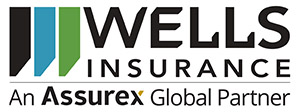- Submit: Some carriers prefer you file directly with them using their claim phone number or carrier web portal if possible. This will be the fastest way to get in line to have your claim worked on. However, some coverage types should be filed in a certain order before others, especially in the event of a named storm or hurricane. If you are unsure, we always encourage you to reach out to us at Wells and we will be happy to assist you.
- Document: Document all damage exactly as you find it. Take lots of photographs and keep detailed notes with dates, etc. Keep everything in a file.
- Mitigate future loss: It is in your contract with your carrier that you have the responsibility to take all reasonable steps to prevent additional losses from occurring. Tarp leaking roofs, clear out wet drywall to prevent mold from growing, etc. IMPORTANT: Anything damaged, keep on your property so that the adjuster can inspect it. Do not throw away these items.
- Contact: You will be contacted by an adjuster from your carrier. This “inside” or “desk” adjuster will be your main point of contact regarding the status of your claim and will have the most up to date information on your case. This adjuster will contact you to set up a date to have an “outside” adjuster visit your property for an inspection of your claim.
- Inspection: The outside adjuster will determine the scope of necessary repairs to be able to prepare an estimate for the covered damages. If you have a contractor chosen to do repair work, please ask them to be present for this inspection.
- Estimate of Damages: The outside adjuster completes their file by writing an estimate for the covered damages.
- File Review: All applicable coverages and the completed estimate are thoroughly reviewed and verified for accuracy.
- Payment Issued: Reimbursement for repair or replacement of your damages may be made in two or more payments. You will receive a copy of the estimate of damages which details all of the following payments:
- First payment: Actual Cash Value (ACV): ACV is the cost to either replace an item with like kind and quality, less depreciation or repair an item, less depreciation. Depreciation is a decrease in the value of an item due to its age and condition.
- Repairing your property: Contact a contractor of your choice and provide them a copy of the estimate. Review the estimate with them to ensure that the scope of damages and repair process is completely understood. If there is a cost difference, contact us immediately. Once the repairs are completed, you may be eligible for the following:
- Second payment: Replacement Cost (RC): If your policy has replacement cost coverage, you may be entitled up to the full amount shown on the estimate you received with your first payment. To receive this payment, you will need to submit the following to your desk adjuster to review for proof of completion:
- An itemized invoice
- Photos of the repaired property
- Other documentation requested
- A follow-up inspection may be performed
- Second payment: Replacement Cost (RC): If your policy has replacement cost coverage, you may be entitled up to the full amount shown on the estimate you received with your first payment. To receive this payment, you will need to submit the following to your desk adjuster to review for proof of completion:
Once the review process is complete, the carrier will reimburse you the depreciation that was withheld, or the actual cost of repairs less the deductible and initial payment, whichever is less.
